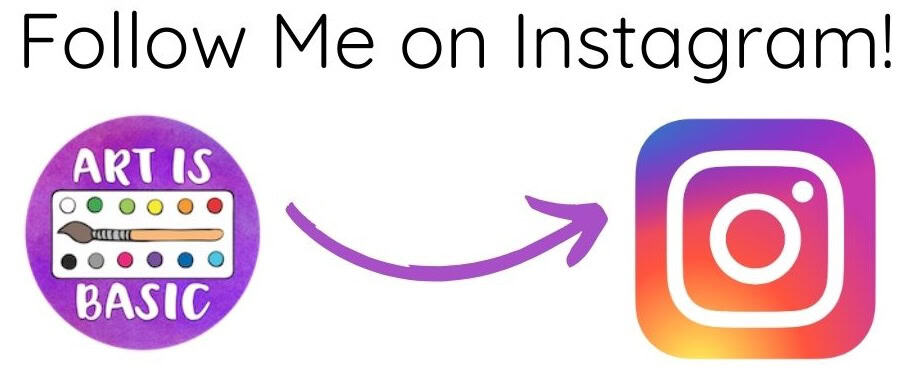First of all, thanks for being a loyal blog reader (or) welcome, if you are new! I have a personal update to share with you… I went on medical leave this week and Monday was my last day of work for the time being. My pregnancy is complicated and I could not work anymore. The baby is healthy, but physically I need to lay down as much as possible and it is really hard to sit or stand without a lot of pain. I have about 4-5 weeks left to go, which seems like a long time to me right now! I haven’t felt much like doing anything except sleeping and mindless activity, so I haven’t made a blog update until now.
Image via Buntis
Before I left, my 3rd graders were working on this Non-objective Line Design drawing. This was a lesson I wrote up last year for Scholastic Art magazine. I showed them a slideshow of artwork and they categorized them as non-objective, abstract or realistic.

I understand there may be slight variations in definitions, but here is how I have learned and understood these terms. Let me know if you have understood and teach these terms differently (or perhaps in a simpler manner.)
Non-objective: Essentially, the artwork does not represent or depict a person, place or thing in the natural world. Usually, the content of the work is its color, shapes, brushstrokes, size, scale, and, in some cases, its process. A non-objective artwork is also abstract. (for example, Piet Mondrian’s artwork with only rectangles and squares)
Abstract art: An artwork that can be based on real life imagery (such as a portrait of a woman by Picasso), but shows a departure from reality (slightly, partial or complete).
Realistic art: Based on how things look in real life.

We talked about types of lines: zig-zag, curvy, wavy, spiky, straight, dotted, dashed.. but also lines that start out as one type and then become another type. We talked about thick and thin, dark and light lines.

We experimented with organic shapes and geometric shapes, tiny and large shapes, dark and light shapes.

We experimented with darkening and thickening parts of our lines and shapes. We also explored shading and contrast. Using a variety of values was a focus in this lesson. Light shades were put next to darker shades to show contrast.

We experimented with using rubbing plates for our shading. Erasers were also an important tool as we attempted to erase loose smudge marks.

Sometimes, smudgy lines and shapes were intentional. Students used smudgy sticks (or blending stumps, as they are actually called) to smooth their shading.

The kids also learned how pencils are categorized by their graphite grades. Here is how I simplified it for the 3rd graders. I wrote it on the board and the kids could choose the type of pencils they wanted to use.
- 6B or higher: very dark, soft graphite, smudges easily
- 5B
- 4B
- 3B
- 2B (continuum of darkness, softness.. the higher the number, the darker the graphite)
- B, H, F, HB (in the middle)
- 2H (lighter graphite, harder, doesn’t smudge as easily)
- 3H (as you move up through the numbers the graphite becomes harder and lighter)
- 4H
- 5H
- 6H and beyond

If you are going to the National Art Ed Conference this week, have fun!! I wish I could go!!

Discover more from Art is Basic | Elementary Art Ideas
Subscribe to get the latest posts sent to your email.


























Hang in there, Marcia. Take the rest and know that we will be here when you get back. I’m going to my 1st NAEA Conference…can’t wait to meet other art teachers. Hopefully that’ll include you one day!
Thanks Party! I feel like I have to keep up with everything even though I really don’t have to. I’m sure you will have a blast in San Diego!! Are you presenting?
Take care Marcia, the bed rest will be over before you know it and you’ll have your beautiful new baby!
As for NAEA convention, I loved meeting you in NYC and hopefully we’ll meet again down the road someday! But babies and health are definitely more important!!! B well!
Oh for sure! I know! I need to take it easy. I hope you have a blast at the convention.
I’ve just discovered your blog today. I’m teaching Gr 1 for the first time, after doing Kindergarten for almost a decade. I’m not overly artistic, but can appreciate the value of teaching the love and concepts of Visual Arts to children. Your blog is phenomenal! Such awesome content. Thanks for your willingness to share!
Thank you so much for your kind words! Thanks for reading.